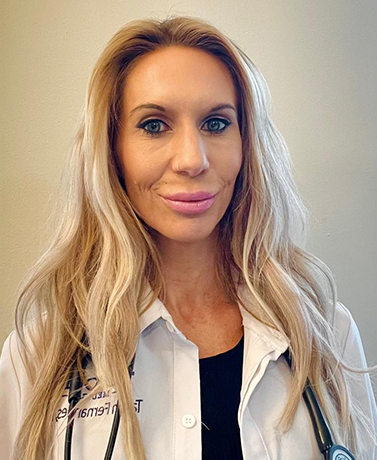Sexual health is increasingly recognized as a foundation for overall health. According to the World Health Organization (WHO), sexual health is defined as “a state of physical, emotional, mental and social well‑being in relation to sexuality; it is not merely the absence of disease, dysfunction or infirmity.”
Within that framework, the concept of sexual stimulation plays a vital role not just in intimate experiences but in how people feel about their bodies, relationships, and mental health. As a telehealth company focused on sexual wellness, SDKare helps you understand this connection and offers professional support when you need it.
What exactly is sexual stimulation?
At its simplest, sexual stimulation refers to anything physical, psychological, emotional, or sensory that initiates or enhances the sexual response cycle. In other words, it’s any input that triggers arousal, desire, or readiness for sexual activity. For example, it might be a caress, a visual cue, a sound, a scent, a memory, or a mental fantasy.
To clarify: when we talk about sexual stimulation, we are not just referring to the act of sexual intercourse or penetration. Rather, it encompasses the full range of stimuli that engage the body and mind’s sexual system, including nerve endings, brain pathways, hormones, emotions, and physical responses. As one source puts it: “Sexual stimulation refers to anything that turns you on physically or mentally.”
How sexual stimulation works: the physiological and psychological interplay
When a stimulus, whether physical (such as touching an erogenous zone) or non‑physical (such as erotic imagery or emotional connection), is perceived, a cascade of responses begins. Nerve endings send signals to the brain (notably the limbic system and somatosensory regions), hormones such as dopamine, oxytocin, and endorphins may be released, and autonomic nervous system pathways mediate increased blood flow to genital (or analogous) areas.
Another element is the sensory and mental dimension: visual clues (e.g., a partner’s expression), auditory cues (e.g., whispered words or music), olfactory cues (scents), and fantasy or memory can all stimulate arousal. These non‑physical cues emphasize how sexual stimulation is not just about touching; it is also about the mind, the environment, and the emotional context.
For example, imagine a couple who are emotionally connected and comfortable with communication. That emotional safety sets the stage for more effective stimulation: the body is relaxed, the mind engaged, the context safe, so the stimulation (physical or mental) is much more likely to lead to positive sexual response.
Prioritize your health by booking a virtual appointment today.

Why sexual stimulation matters for well‑being
The relationship between sexual health (including stimulation) and overall, well‑being is well supported by research. Studies show that positive sexual function and satisfaction are associated with lower levels of depression and anxiety, better quality of life, and improved psychological resilience.
For example, one large analysis found that multiple domains of sexual function (desire, arousal, orgasm, satisfaction) correlated negatively with depressive symptoms and anxiety in both women and men.
Another review focusing on women found that better psychological well‑being (measured as self‑esteem, life satisfaction, and emotional health) was significantly associated with better sexual health.
Why does stimulation matter? Because effective sexual stimulation leads to satisfying sexual experiences (or the potential for them), which in turn support emotional intimacy, improved mood, better sleep, reduced stress, and enhanced relationship quality. One study reported that physical affection or sexual behaviour predicted next‑day reductions in negative mood and stress.
Put simply: when your sexual system is engaged in a positive, healthy way, your brain and body benefit beyond just the moment of intimacy. Whereas when stimulation is missing, misunderstood, or dysfunctional, you may see negative downstream effects: frustration, diminished self‑esteem, relationship tension, or even mental‑health declines.
Common misconceptions about sexual stimulation
Here are a few myths that often arise:
- Myth: Sexual stimulation only comes from physical contact.
Fact: Non‑physical stimuli, like mental fantasies, emotional connection, smells/sounds, can be just as powerful. - Myth: More stimulation always equals better sex or better health.
Fact: It’s the quality of stimulation (context, comfort, consent, mental state) rather than just quantity that really matters. Poor context (stress, fatigue, emotional disconnect) can blunt the benefits. - Myth: If my stimulation/sexual arousal isn’t “perfect,” something is wrong.
Fact: Variation is normal; age, health status, medications, stress, and relationship factors all influence stimulation and arousal. If you’re distressed or impaired, though, that may warrant professional attention.

How telehealth via SDKare can support your sexual stimulation and well‑being
As a telehealth provider specialising in sexual wellness, SDKare offers discreet, professional, evidence‑based support. Here’s how we help:
- Assessment: Through secure online consultation, we gather your sexual history, current issues (including low stimulation, arousal problems, etc.), psychological & relationship context, and lifestyle factors.
- Personalised guidance: Based on your profile, we develop a plan addressing stimulation (and its supporting factors), including communication with partner, exploring mental and sensory cues, lifestyle changes (sleep, stress, exercise), and, if needed, referral for further diagnostics (hormonal, relational therapy).
- Follow‑up: Monitoring how stimulation and sexual satisfaction evolve over time, adjusting plan as needed, supporting you in achieving the sexual health and well‑being you deserve.
By integrating telehealth, you gain the convenience of access, expert input, confidentiality, and the empowerment to proactively address sexual stimulation only when sexual dysfunction arises, but as part of a broader well‑being strategy.
Practical suggestions to improve sexual stimulation (and thus your well‑being)
While individual guidance is always best, here are evidence‑informed tips to help strengthen sexual stimulation and its positive impact:
- Create emotional and physical safety: Good communication with your partner about what stimulates you mentally/emotionally and physically is foundational.
- Explore sensory and mental cues: Recognise what kind of stimuli (visual, auditory, scent, fantasy, touch) engage in your sexual response. Collaborate with your partner or alone, as appropriate.
- Prioritise health: Healthy sleep patterns, stress management, regular physical activity, and a balanced diet all support optimal sexual response (including stimulation).
- Reduce distractions: Fatigue, work pressure, and relationship tension can blunt stimulation. Setting aside dedicated, relaxed time can make a big difference.
If you’re persistently experiencing low or absent stimulation (or distress about stimulation/sexual response), consider seeking professional help via SDKare. It’s not “just in your head” or “just lack”; there are modifiable factors and treatments.

Final thoughts
Sexual stimulation is far more than a physical “turn‑on.” It is a dynamic interplay of body, brain, emotions, and environment, and its influence reaches into your overall well‑being. By recognising what stimulates you, understanding how that stimulation supports sexual satisfaction, and working proactively (with support if needed), you enhance not only your intimate life but your mental, emotional, and relational health too. At SDKare, we’re committed to helping you navigate sexual stimulation in an informed, safe, and positive way.
Frequently Asked Questions
Not exactly. Sexual stimulation is the input (touch, fantasy, sight, sound, etc.) that triggers the sexual response cycle. Sexual arousal is the body’s and brain’s reaction to that stimulation, changes in blood flow, hormones, and nerve activation.
Yes. Mental stimuli (fantasy, memory), sensory stimuli (sound, scent, sight), and emotional stimuli (intimacy, connection) can all trigger sexual stimulation even in the absence of physical contact.
While healthy stimulation helps, it does not guarantee satisfaction. Factors like physical health, psychological state, relationship quality, medication, hormonal stress, and context all influence sexual function and satisfaction.
A persistent lack of stimulation, or distress about your sexual response, is a valid reason to seek help. Telehealth services like SDKare can guide evaluation of lifestyle, psychological, relationship, and physical factors, and support customised interventions.
When practiced consensually, safely, and in a context of respect, stimulation is not harmful. However, overstimulation, discomfort, coercion, or using stimulation as an escape from other issues may lead to negative consequences. If you experience pain, loss of function, shame, fear, or distress in relation to stimulation, you should consult a healthcare professional.
Prioritize your health by booking a virtual appointment today.





